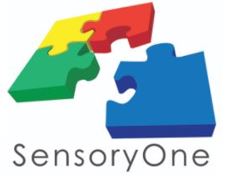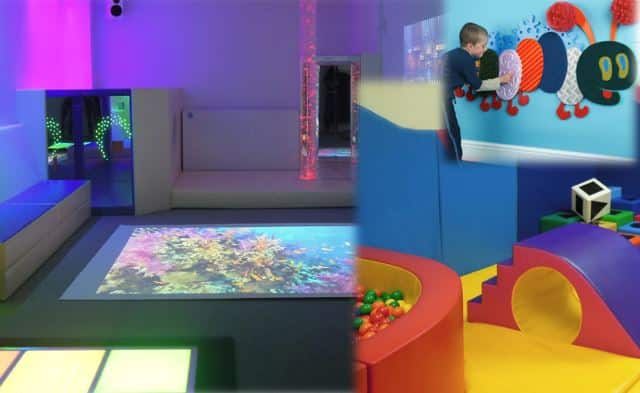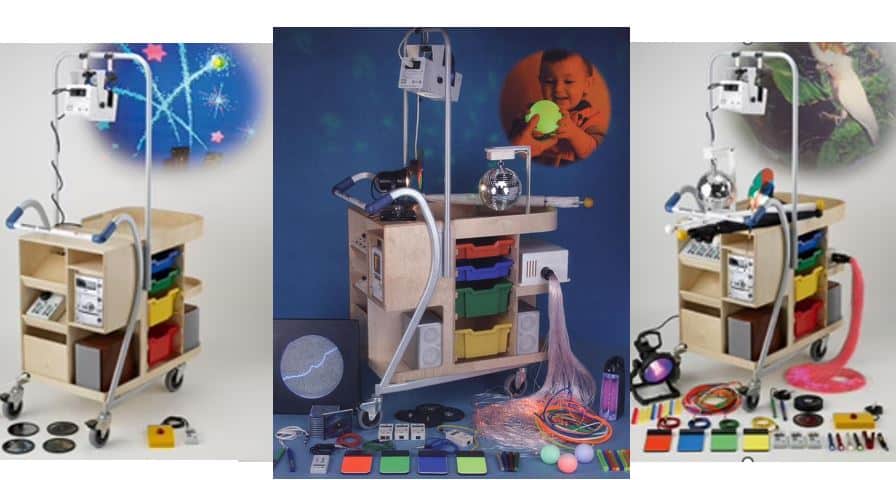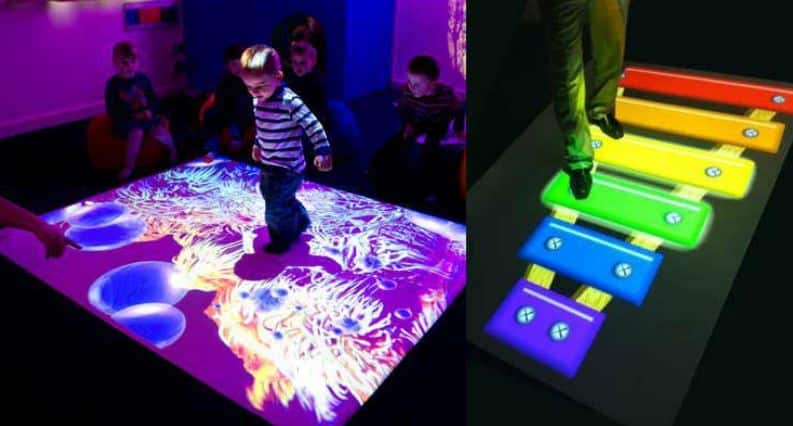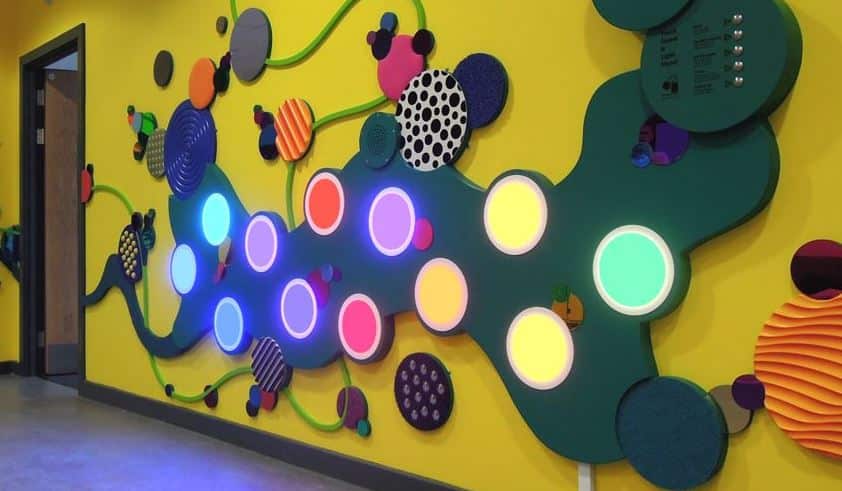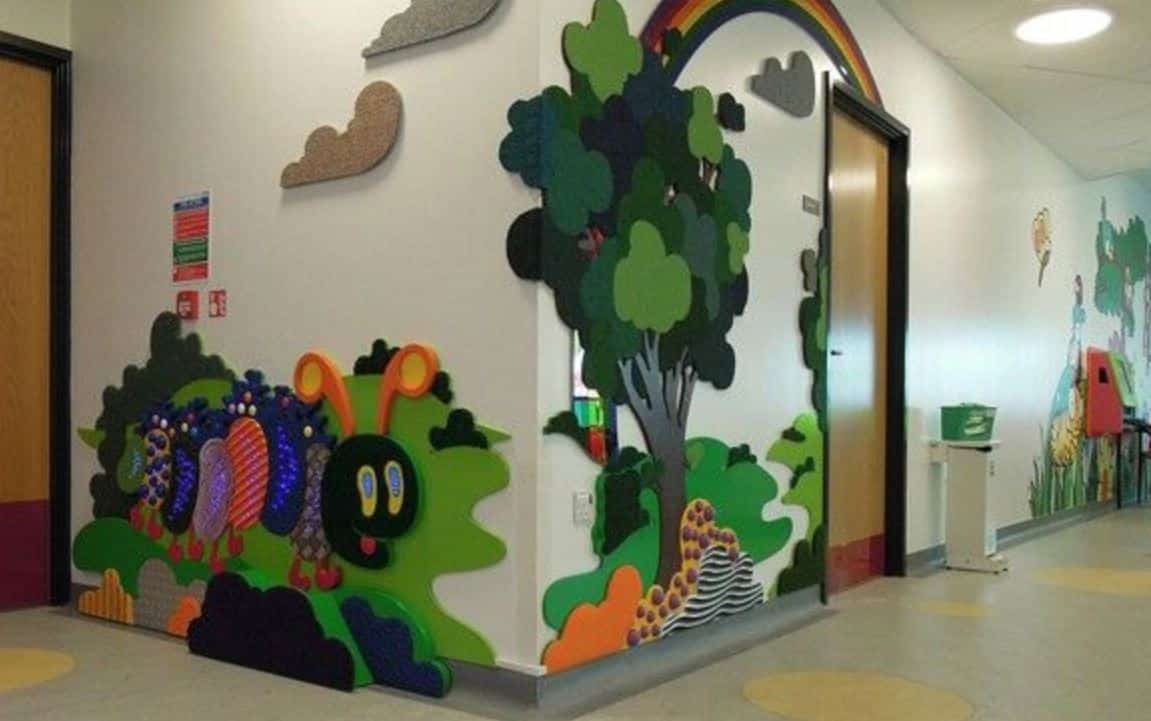As sensory spaces increase in popularity, we are learning even more about the kids who enjoy and benefit from their use. In particular, children that benefit immensely from having access to a sensory centered environment are those who coping with ADHD and learning disabilities. These disorders can create an overwhelming environment for kids. The ability to retreat, refocus and expend energy can be helpful for both the children with the disorders, and educators and/or caregivers that support them.
At SensoryOne, we support health, education and caregivers create environments that provide stimulation and calming environments. Those with ADHD respond positively to interactive offerings afforded by a multi-sensory space.
What is ADHD?
ADHD is a neurological disorder that is most often diagnosed in children. However, as more becomes understood about the disorder and its symptoms, adults are getting diagnosed with increasing frequency as well.
ADHD, or attention-deficit/hyperactivity disorder, most commonly presents as an inability to sit still or pay attention. While it is normal for kids to have difficulty doing this at times, those with ADHD will not grow out of this behaviour.
The severity of this disorder can vary quite a bit from one child (or adult) to the next, and can create problems throughout their lives at school, at home and with friends.
Benefits of sensory stimulation for kids with ADHD
Sensory environments in schools, doctors’ offices and at home can have a number of positive effects on kids who have ADHD or other learning disabilities. The opportunity to remove themselves from a situation in which they are overwhelmed, or are overwhelming those around them, can help kids to learn how to manage their ADHD, which will allow them to thrive as they get older.
Some benefits of creating a sensory room or space for kids who have ADHD or learning disabilities can include:
Helps focus attention
One of the hallmarks of ADHD is the inability to focus, so sensory activities that draw in a child’s attention can help them learn ways to apply this skill in the outside world. Wall panels and interactive projectors are a great way to draw a child’s attention to a task or game and encourage their focused participation.
Helps them expend energy
Children with ADHD often have excess energy that they aren’t sure what to do with, especially in settings like a school classroom where the expectation is to calmly sit in a desk and pay attention. A sensory room with activities like a small trampoline, a swing or climbing rope, interactive floor panels and other more physical activities can teach kids to use these dedicated spaces as an energy release, in order to return to the classroom somewhat calmer.
Helps filter stimulation
For many children living with a sensory disorder, their day-to-day surroundings can be a bit of a sensory overload. The constant stimulation, especially in a school or other public space, can make it difficult to focus and find peace. A sensory room allows users to choose the level of interaction and stimulation that they can manage, and alter their environment to be one that they can thrive in. Soft & dimmable lights, quiet music, comfortable seating and relaxing games are all excellent features to include in a sensory space.
Develop learning techniques
Kids with learning disabilities often don’t naturally thrive in a typical classroom environment. For many, this traditional style of teaching makes learning objectives difficult to absorb and benefit from. A sensory room allows children to experiment with different learning techniques to help them figure out ways in which they do learn well. Some kids with ADHD or learning disabilities will do better with a hands-on approach, while others may thrive with more visual cues. A sensory environment can provide a varied and unique experience that is tailored to each individual student.
Reduce distraction for other kids in the classroom
Kids who feel overwhelmed, over stimulated or who have an abundance of energy that is hard for them to control will often react by causing distractions for the kids around them. The ability to remove them from the classroom and give them a sensory environment to immerse in can help reduce the distractions to their fellow students while still meeting the needs of the student.
Sensory stimulation an important factor for kids with ADHD
Sensory rooms and portable carts are important tools in helping kids learn how to manage their ADHD and learning challenges. Offering a safe space for them to spend time, manage stimulation and learn about their needs and interests will help kids have the best experience possible.

